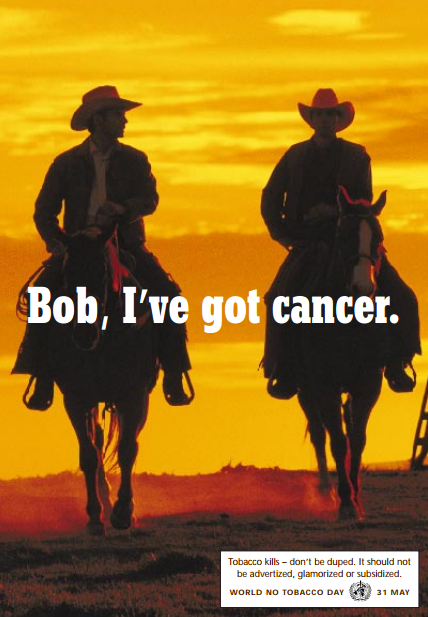Remember the great ads that struck back against the creative marketing of cigarettes? Bob, Ive got cancer countered the tobacco industry campaigns that targeted youth with images of cool cowboys, by highlighting the harms of tobacco use. The ads, created by the California Department of Health in the 1990s and shared with the World Health Organization (WHO) for global use, were evidence-based unlike current government funded campaigns demonizing e-cigarettes. The message to Bob was clear: tobacco kills stop now! In contrast, the new California and Center for Disease Control and Prevention (CDC) campaigns send confused messages about risks and take the focus away from tobacco the real killer of over 36,000 of Bobs sons and daughters in California today.

While adult smoking prevalence in the US has decreased from 42.4% in 1942 to 17.8% in 2013, we are not close to meeting the Healthy People 2020 goal of 12%. Almost 500 000 people die from tobacco across the US each year. Innovations are needed to help the nearly 70% of smokers who want to quit. The ACA requires that insurers cover the costs of tobacco cessation services recommended by the US Preventive Services Task Force (USPSTF); these include nicotine replacement therapy (NRT) and prescription medications approved for tobacco cessation. However, recent research shows that intensive e-cig users were six time more likely to quit smoking. Instead of following the lead of the UK Public Health Minister and urging smokers to switch to e-cigs, public health agencies in the US are currently adding to smokers confusion.
Myths surrounding e-cigarettes have resulted in the mischaracterization of the products as dangerous. These messages are amplified by the media, misinforming the public. While research is needed to confirm the long term safety of e-cigarettes and to tighten up on access to kids, we can be sure that they are substantially safer than continuing to use tobacco, a product that kills up to half of its users and gives off smoke that contains over 250 harmful chemicals.
Every e-cigarette story and campaign that does not lead with the message tobacco kills and nicotine addicts adds to public perception that e-cigarettes are as bad or maybe even worse than cigarettes. False messages that demonize nicotine and e-cigarettes confuse the public and prevent smokers from successfully quitting.
The focus must remain on the real killer: tobacco.


Source of images:
- Thumbnail: World Health Organization
- Wake Up ad campaign: California Department of Public Health Website – Press Kit on Wake Up Ad ampaign to Counter E-cigarettes
- Former smoker ad campaign: CDC Campaign, Tips from a Former Smoker
[Links Updated 7 April 2015]






